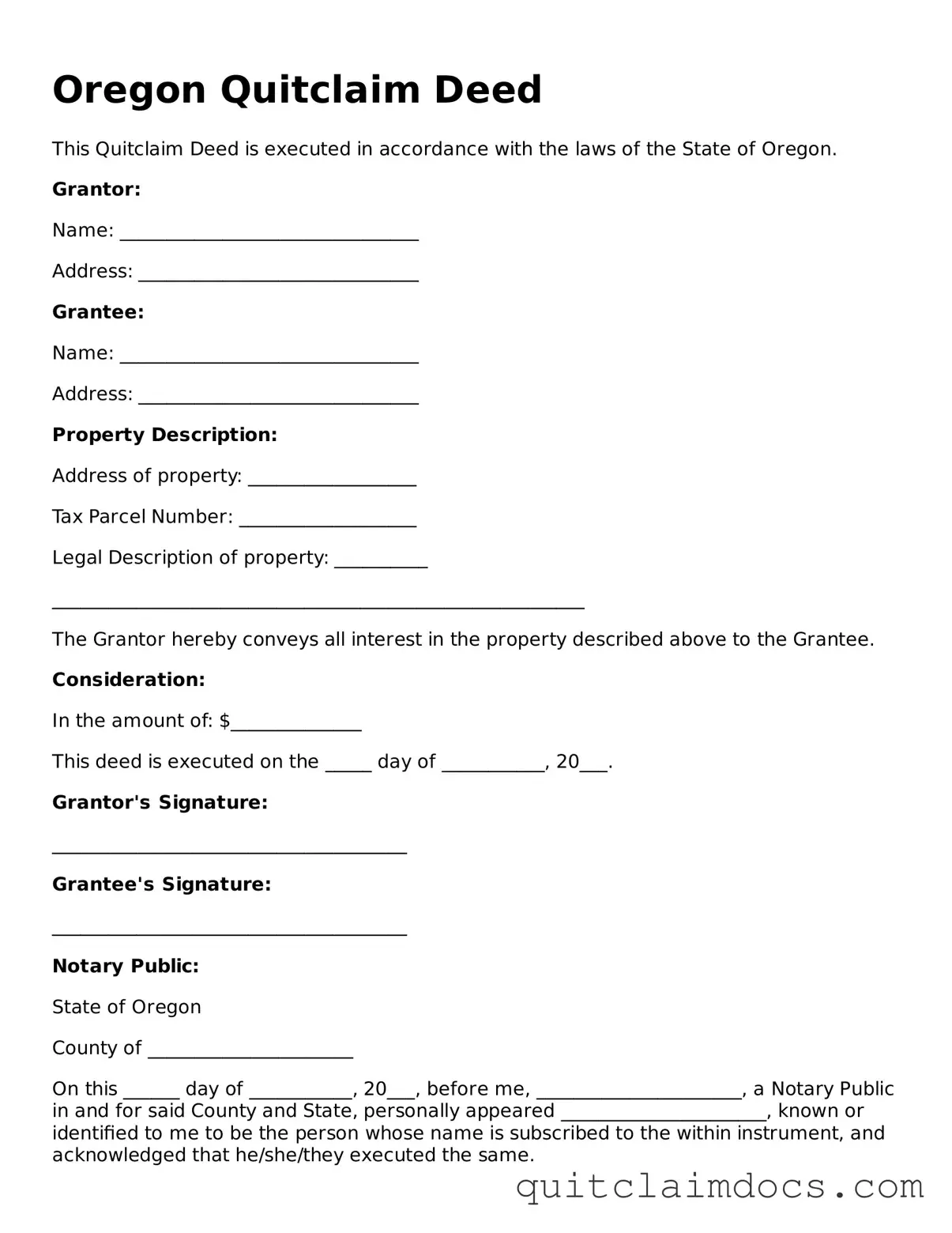Oregon Quitclaim Deed
This Quitclaim Deed is executed in accordance with the laws of the State of Oregon.
Grantor:
Name: ________________________________
Address: ______________________________
Grantee:
Name: ________________________________
Address: ______________________________
Property Description:
Address of property: __________________
Tax Parcel Number: ___________________
Legal Description of property: __________
_________________________________________________________
The Grantor hereby conveys all interest in the property described above to the Grantee.
Consideration:
In the amount of: $______________
This deed is executed on the _____ day of ___________, 20___.
Grantor's Signature:
______________________________________
Grantee's Signature:
______________________________________
Notary Public:
State of Oregon
County of ______________________
On this ______ day of ___________, 20___, before me, ______________________, a Notary Public in and for said County and State, personally appeared ______________________, known or identified to me to be the person whose name is subscribed to the within instrument, and acknowledged that he/she/they executed the same.
Notary Public Signature:
______________________________________
My Commission Expires: ________________
